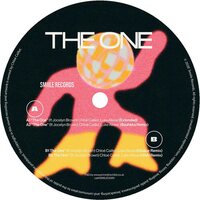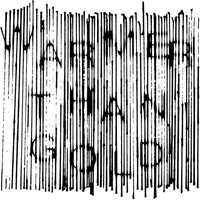Masayuki Takayanagi was one of the truly iconoclastic musicians to emerge from Japan, or anywhere else, in the 20th Century. Though he won acclaim in the 1950's and 60's as a master of the electric guitar and jazz improvisation, Takayanagi was a restless spirit, deeply engaged with the era's new movements in contemporary art, music, liter His work, beginning in the late 1960's, placed him on the leading edge of these developments; he began expanding on the most radical elements of American and European free jazz, infusing them with the raw feedback and dissonance of electronic and avant-garde music. With his various "New Direction" groups, Takayanagi broke free of traditional structures and developed new structures. theory of music that embraced an aggressive and unrelenting style of playing that has remained almost completely unparalleled in it's ferocity. Of all the albums to be released during Takayanagi's lifetime, 1975's ECLIPSE was perhaps the most enigmatic and sought after. Released in an edition of only 100, it almost immediately disappeared and became a Holy Grail for Japanese seurs of adventur ous music, and rightly so. It's first side contained a two-part realization of Takayanagi's "Gradually Projection" modality - a searching interplay between instruments- slowly emerging from a sparse open field and building with the tension of a looming thunderstorm. The second side contains an epic performance of a "Mass Projection", a high energy, densely layered barrage of sound that it in it. 25 minutes, never Once slackens it's intensity. It would be another 31 years before this key album in Takayangi's oeuvre would finally have a (slightly) wide audience through a CD release by Japan's P.S.F. Records. Black Editions is proud to present a deluxe vinyl edition of this masterwork, revealingly remastered from the original tapes by Elysian Masters. The album is packaged in a heavy double tip-on gate fold jacket that pays tribute to the original handmade packaging and features a previously unseen studio photograph of Takayanagi by Tatsuo Minami.
Install our app to receive notifications when new upcoming releases are added.

Recommended equipment and accessories
-

Pro-Ject Debut Carbon EVO
Featuring a one-piece carbon fiber tonearm, precision-tuned motor, and a heavy steel platter with TPE damping, it ensures superior stability and sound quality.
-

Edifier R1280DB Powered Speakers
Combining classic design with modern Bluetooth connectivity, built-in amplification and versatile inputs, these speakers deliver rich, balanced sound.
-

Audioengine A2 Plus
Precision-engineered 2.75-inch woofers and a 0.75-inch silk dome tweeter, featuring built-in DAC and Bluetooth connectivity for seamless integration.
-

Vinyl Care - Top Picks
A selection of accesories to keep your turntable equipment & vinyl records in the best shape
-

Nagaoka MP-110H Cartridge
Features a high-quality elliptical stylus that provides excellent tracking and minimizes distortion, delivering a detailed sound reproduction with an output voltage of 5.0 mV
Featured Upcoming Vinyl
-

Factory Floor Tell Me
Phantasy Sound
January 9, 2026 -

Chloe Caillet The One
Smiile Records
January 9, 2026 -

Soen Reliance
Silver Lining Music
January 16, 2026 -

Jason Aldean Songs About Us [2xLP]
Bmg
April 24, 2026 -

Creem Circus Get. Switched. On!
Creep Records
January 9, 2026 -

The Gloom In The Corner Royal Discordance (Clear Purple Red Splatter etch on D side) [2xLP]
Sharptone
February 27, 2026 -

Cyclone Known Unto God
M-Theory Audio
February 6, 2026 -

Kerosene Heights Blame It On The Weather (Coke Bottle Clear)
Sideonedummy Records
January 16, 2026 -

Megan Moroney Cloud 9: Megan's Signature Pink Vinyl [2xLP]
Sony Music Nashville
February 20, 2026 -

William Basinski The Disintegration Loops (Arcadia Archive Edition) [8xLP]
Temporary Residence
February 27, 2026 -

Guv Warmer Than Gold
Run For Cover
January 30, 2026 -

Paul Mccartney's Wings WOnderful Christmastime / Rudolph The Red-Nosed Reggae
Lawson Ent
December 19, 2025 -

Kula Shaker Wormslayer
Strange F.O.L.K. LLP
January 30, 2026 -

Unfyros Star Blood (With Book)
Avantgarde Music
February 6, 2026


















